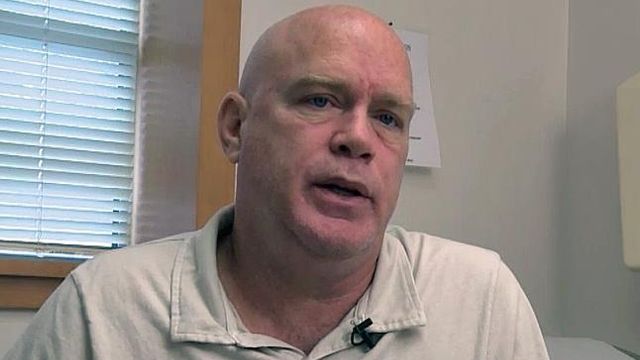Duke provides new chronic pain relief implant
Controlling chronic pain puts many people at risk of addiction to narcotic medications. According to experts, it can be a problem for people with complications after surgeries, for those who have been in bad accidents, or wounded veterans.
Posted — UpdatedIn August 2012, Sergeant Kyle Synder, of the 514th Military Police company with the Army National Guard, was deployed to Afghanistan to train Afghan police. A suicide bomber dressed as a police officer approached his unit in a street market.
"(He) detonated his vest and killed three of the North Carolina National Guard soldiers that were with me," Synder said.
Since then, Synder has had 20 surgeries, but still sufferers from "complex regional pain syndrome" in his left foot.
"It was like a flame throwing pain, like someone is taking knives, like all day long, and just jabbing them into my foot," he said.
Synder overcame narcotic pain medication addiction, but the pain remained, so he wanted his left leg amputated.
Doctors at the Durham VA Hospital, working with Duke neurosurgeon Dr. Nandan Lad, offered him a new implant option, the first of its kind in the state.
DRG - dorsal root ganglion - is found at the root of every nerve in the spine.
"DRG stimulation was FDA approved in February 2016," Lad said. "You can think of it as a filter, or a stopping point, from the nerve that starts in an extremity, in this case the foot, and goes all the way up the spine."
With complex regional pain syndrome, neurons within the DRG fire abnormally. An implant wire at the right spine level is connected to a device the size of a pacemaker, inserted near the hip. It sends a constant energy charge to the DRG.
"By stimulating the DRG...you can block the body's input of pain," Lad said.
Synder said it has helped to decrease his pain by 80 percent. It also saved him from amputation and helped him return to near normal physical activity.
"It's small steps but to me, these are huge," Snyder said. "You know, these are things that I wasn't able to do for years."
Lad said the implant battery needs replacing about every 5 to 7 years with a simple 15-minute outpatient procedure.
• Credits
Copyright 2024 by Capitol Broadcasting Company. All rights reserved. This material may not be published, broadcast, rewritten or redistributed.





